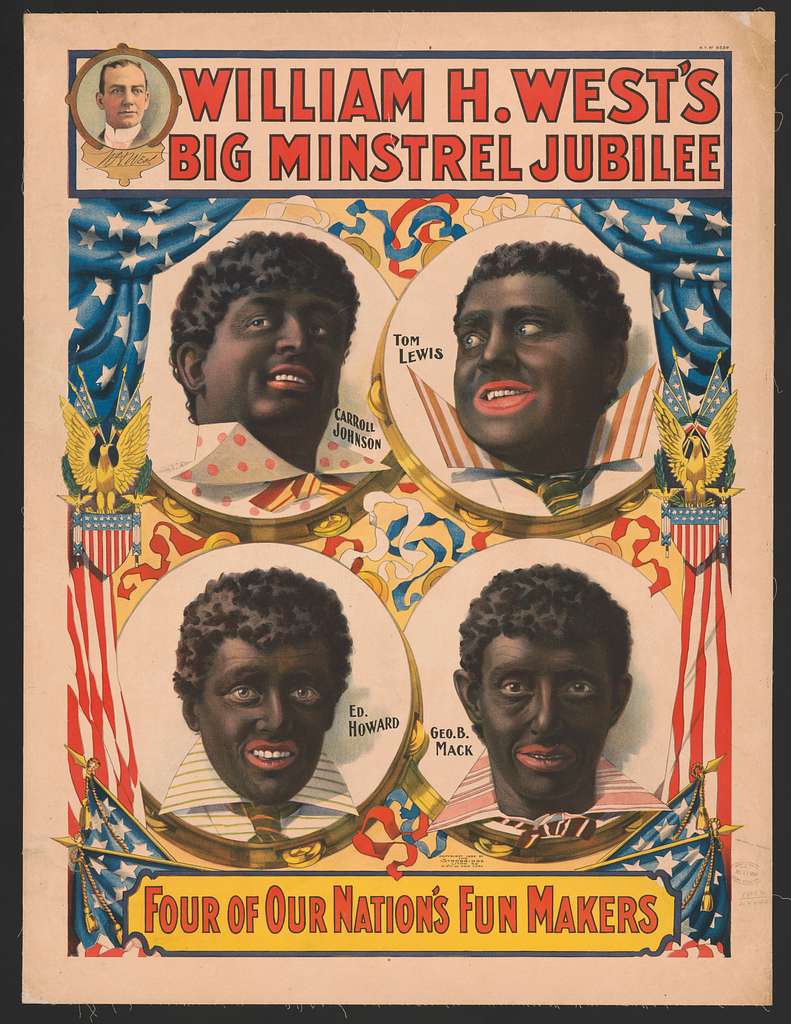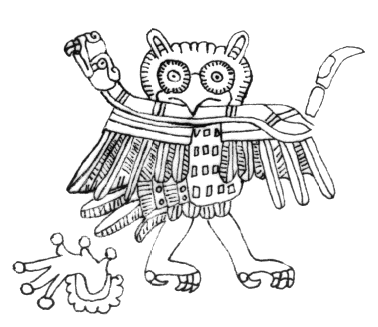サイバーレイシズム,電脳人種主義
Cyber-racism, racismo cibernetico

Cyber-racism の概念を初期に提唱した一人,レス・バック教授(グラスゴー大学)
解説:池田光穂
サイバーレイシズム,電脳人種主義
Cyber-racism, racismo cibernetico

Cyber-racism の概念を初期に提唱した一人,レス・バック教授(グラスゴー大学)
解説:池田光穂
人種主義(レイシズム)とは、ルース・ベネディクト (1997: 116)によると「ある民族集団が先天的に劣っ ており、別の集団が先天的に優等であるように運命づけられている、と語るドグマ」のことである。言い方をかえると「人種とは、人間の[下位]集団に固有の——すなわち否定できない——属性が確かに存在するという、心理的かつ社会的オブセッションである」。今日では、人間集団の社会的違いを、生物学を基調とする本質主義的な種的な違いをあらゆるタイプの差別や 権力にもとづく選別に利用する考え、をそう呼ぶことができる。
サイバーレイシズム、あるいは電脳人種主義とは、サ イバー空間のなかで繰り広げられる人種主義あるいは人種主義思想のことをいう。
サイバー化や電脳化は、ふるくは、人種主義のような 無知蒙昧な思考形態を駆逐するものと思われた。しかし、現状は逆である。見えないレイシズムが電脳空間の中に跋扈している。たとえば、帰国子女を「日本人 の新しいタイプ」として表現する社会学者は、この種の仮想レイシズムの虜になっている。つまり帰国子女を「日本人」カテゴリーとして新レパートリーに分類 というのは、排除して包摂するという日本の新しい人種主義である。社会学や心理学で人種学ではないという著者の無自覚がその証左だ。
つまり、サイバーレイシズム、あるいは電脳人種主義 は、ネット(電脳空間)における、サイバー人種学あるいはサイバー優生学(Cyber-eugenics)に加担しつつあることについて無自覚なのであ る。
ウィキペディア(英語)は、「検証のために追加の文献引証が必要」という評価を下しているが、サイバーレイシズムについて次のように解説している。
""Cyber racism" is a term coined by Les Back (b.1962) in 2002[1] to capture the phenomenon of racism online, particularly on white supremacist web sites. The term encompasses racist rhetoric that is distributed through computer-mediated means and includes some or all of the following characteristics: Ideas of racial uniqueness, nationalism and common destiny; racial supremacy, superiority and separation; conceptions of racial otherness; and anti-establishment world-view.Racist views are common and often more extreme on the internet due to a level of anonymity offered by the internet.[2][3] In a 2009 book about "common misconceptions about white supremacy online, [its] threats to today's youth; and possible solutions on navigating through the Internet, a large space where so much information is easily accessible (including hate-speech and other offensive content)", City University of New York associate professor Jessie Daniels claimed that the number of white supremacy sites online was then rising; especially in the United States after the 2008 presidential elections.[4] According to the Australian Human Rights Commission, Cyber-Racism involves online activity that can include "jokes or comments that cause offence or hurt; name-calling or verbal abuse; harassment or intimidation, or public commentary that inflames hostility towards certain groups".[5] Racism online can have the same effects as offensive remarks not online.[6]"
「「サイバー・レイシズム」とは、2002年にレス・バック(Les Back) によって作られた造語で、オンライン、特に白人至上主義者のウェブサイトにおける人種差別現象を捕らえたものである。この用語は、コンピュータを介した手 段で配信され、以下の特徴の一部またはすべてを含む人種差別的レトリックを包含する: 人種的独自性、ナショナリズム、運命共同体、人種至上主義、優越性、分離、人種的他者性の概念、反体制的な世界観などである。人種差別的な見解は、イン ターネットが提供する匿名性のレベルのため、インターネット上では一般的であり、しばしばより過激である。ニューヨーク市立大学のジェシー・ダニエルズ准 教授は、2009年に出版された「ネット上の白人至上主義に関する一般的な誤解、現代の若者に対する脅威、(ヘイトスピーチやその他の攻撃的なコンテンツ を含む)多くの情報に簡単にアクセスできる大きな空間であるインターネットをナビゲートするための可能な解決策」について書かれた本の中で、ネット上の白 人至上主義サイトの数は当時増加しており、特に2008年の大統領選挙後のアメリカでは増加していると主張している[4]。 オーストラリア人権委員会によると、サイバーレイシズムには、「不快感を与えたり傷つけたりするジョークやコメント、悪口や暴言、嫌がらせや脅迫、特定の グループに対する敵意を煽るような公共の場でのコメント」などが含まれる。ネット上での人種差別は、ネット上ではない攻撃的な発言と同じ影響を与える可能 性がある。」
|
Cyber racism is most commonly defined as racism which occurs in the cyber world. サイバー人種差別とは何か? What is cyber racism? https://racismnoway.com.au/about-racism/cyber-racism/ |
もちろん、今日の人種主義の先駆形態・イデオロギー ともいえる白人優越主義(White supremacy or white supremacism)は、啓蒙主義の17世紀までにさかのぼれる科学的人 種主義(Scientific racism)の影響を受けてきたが、それについては、リンク先の情報をみていただきたい。科学的人種主義の同義語としては、「人種生物学」「人 種的生物学」「疑似科学的人種主義」などの用語があり、近代のそれは、ジョゼフ・アルテュール・ド・ゴビノー伯爵(Joseph Arthur, Comte de Gobineau / Arthur de Gobineau, 1816-1882)によるものであり、彼の生物学的人種主 義は、現在の人種主義のスタイルに大きな影響を与えた。
| Racism on the Internet
sometimes also referred to as cyber-racism and more broadly considered
as an online hate crime or an internet hate crime consists of racist
rhetoric or bullying that is distributed through computer-mediated
means and includes some or all of the following characteristics: ideas
of racial uniqueness, racist attitudes towards specific social
categories, racist stereotypes, hate-speech, nationalism and common
destiny, racial supremacy, superiority and separation, conceptions of
racial otherness, and anti-establishment world-view.[1][2][3][4][5]
Racism online can have the same effects as offensive remarks made
face-to-face.[6] |
インターネット上の人種差別はサイバーレイシズムとも呼ばれ、より広義
にはオンラインヘイトクライムまたはインターネットヘイトクライムと考えられており、コンピュータを介した手段を通じて配信される人種差別的な暴言やいじ
めから構成され、以下の特徴の一部またはすべてを含む:人種的独自性の観念、特定の社会的カテゴリーに対する人種差別的態度、人種差別的ステレオタイプ、
ヘイトスピーチ、ナショナリズムと運命共同体、人種至上主義、優越性と分離、人種的他者性の観念、反体制的世界観。
[1][2][3][4][5]オンラインでの人種差別は、面と向かってなされる攻撃的な発言と同じ効果をもたらす可能性がある[6]。 |
| Definitions Cyber racism has been interpreted to be more than a phenomenon featuring racist acts displayed online. According to the Australian Human Rights Commission, Cyber-Racism involves online activity that can include "jokes or comments that cause offense or hurt; name-calling or verbal abuse; harassment or intimidation, or public commentary that inflames hostility towards certain groups".[7] |
定義 サイバーレイシズムは、オンライン上で人種差別的行為が行われる現象以上のものと解釈されている。オーストラリア人権委員会によれば、サイバーレイシズム は、「不快感や傷つけを与えるジョークやコメント、罵声や暴言、嫌がらせや脅迫、特定の集団に対する敵意を煽る公のコメント」[7]を含む可能性のあるオ ンライン活動を含む。 |
| Enabling factors Institutional racism Though there have been studies and strategies for thwarting and confronting cyber racism on the individual level there have not been many studies that expand on how cyber racism's roots in institutional racism can be combated.[8] An increase in literature on cyber racism's relationship with institutional racism will provide new avenues for research on combatting cyber racism on a systemic level.[9] For example, cyber racism's connections to institutional racism have been noted in the work of Jessie Daniels, a professor of sociology at Hunter College.[10] Although some tech companies have taken steps to combat cyber racism on their sites, most tech companies are hesitant to take action over fears of limiting free speech.[11] A Declaration of the Independence of Cyberspace, a document that declares the internet as a place free from control by "governments of the industrial world",[12] continues to influence and reflect the views of Silicon Valley. Online stereotypes Online stereotypes can cause racist prejudice and lead to cyber racism. For example, scientists and activists have warned that the use of the stereotype "Nigerian Prince" for referring to advance-fee scammers is racist, i.e. "reducing Nigeria to a nation of scammers and fraudulent princes, as some people still do online, is a stereotype that needs to be called out".[13] Black-fishing & profiting from Black aesthetics This section does not cite any sources. Please help improve this section by adding citations to reliable sources. Unsourced material may be challenged and removed. (April 2024) (Learn how and when to remove this message) According to CNN, blackfishing occurs when a non-Black celebrity or influencer intentionally alters their physical appearance, by appropriating the skin tone, hair texture and overall aesthetics associated with and/or originating from Black people. It is common on social media. Many non-Black celebrities have been criticized over tanning their skin to appear darker skinned, often times looking more racially ambiguous and/or Black. It is believed[by whom?] that the increase of social media marketing has made space for more contemporary racist microaggressions that involve the monetization of aesthetics associated with Black American culture. Digital blackface  A flyer of minstrel performer William H. West's "Big Minstrel Jubliee" of 1899. Pictured are portraits of Carroll Johnson, Tom Lewis, Geo. B. Mack, and Ed Howard, all in blackface.  Oprah Winfrey is frequently used as a GIF or reaction meme by internet users to showcase an expressive form of emotion. Blackface, the stereotypical practice of caricaturing Black people, has been around since the 19th century. The theatrical minstrel show included White performers participating "comedic", though highly racist, skits, and performances depicting Black people. Performers would often paint their faces black with obnoxiously big red lips as well as talk in early African American Vernacular English to symbolize their perceptions of Black people.[14] The stereotypes portrayed in minstrel shows have been reflected in various forms of media over time such as Hattie McDaniel's role as the motherly, yet desexualized "mammy" in the 1939 film adaptation of the novel Gone with the Wind,[15] or the lazy and inarticulate "coon" caricature.[16] Today, the advancement of technology has allocated the use of GIFs and reaction memes of Black people to portray exaggerated forms emotions online because internet users think of Black people as "excessively expressive and emotional". One of the most commonly used people in GIFs and memes is media mogul Oprah Winfrey, whose clips from her former talk show and occasional TV specials are often created into gifs and memes and are used frequently on the internet.[17] Online anonymity Racist views are common and often more extreme on the Internet due to a level of anonymity offered by the Internet.[18][19] In a 2009 book about "common misconceptions about white supremacy online, [its] threats to today's youth; and possible solutions on navigating through the Internet, a large space where so much information is easily accessible (including hate-speech and other offensive content)", City University of New York associate professor Jessie Daniels claimed that the number of white supremacy sites online was then rising; especially in the United States after the 2008 presidential elections.[20] Online alt-right communities The popularity of sites used by alt-right communities has allowed cyber racism to garner attention from mainstream media. For instance, the alt-right claimed the "Pepe the frog" meme as a hate symbol after mixing "Pepe in with Nazi propaganda" on 4chan.[11][21] This gained major attention on Twitter after a journalist tweeted about the association. Alt-right users considered this a "victory" because it caused the public to discuss their ideology. Algorithmic bias According to Algorithmic bias algorithms are designed by parsing large datasets, so they often reflect and reinforce societal biases via the biased patterns within the data and then echo them as definitive truths. In essence, the neutrality of the algorithm depends heavily on the neutrality of the data it is created from.[22] The results of discriminatory decisions become part of the foundational datasets. For example, job hiring data is historically discriminatory. When hiring data is embedded in an algorithm, it would determine certain groups to be more suited for the position, perpetuating the historical discrimination. [23] In her article "Rise of the Alt-Right",[11] Daniels explains how algorithms "speed up the spread of White supremacist ideology" by producing search results that reinforce cyber racism.[11] Daniels posits that algorithms direct alt-right users to sites that echo their views. This allows users to connect and build communities on platforms that place little to no restrictions on speech, such as 4chan. Daniels points to the internet searches of Dylann Roof, a white supremacist, as an example of how algorithms perpetuate cyber racism. She claims that his internet search for "black on white crime" directed him to racist sites that reinforced and strengthened his racist views.[11] Moreover, Latanya Sweeney, a Harvard professor, has found that online advertisements generated by algorithms tend to display more advertisements for arrest records with African American-sounding names than Caucasian-sounding names. Similarly, Caya Carter’s Honors Thesis lists a few glaringly racist examples of searching specifically ‘black girls’ returned harmful query results on the first page, like “Black Booty on the Beach” and other hyper-sexual responses. Carter also notes through their own findings that a Google search involving varying races of people provided very biased search suggestions with either negative connotations or stereotypes being most associated with black people, and even more so for black women. [24] Nicol Turner Lee writes about a similar situation where search results for ‘black sounding names’ returned arrest record information. Lee also mentions that a few years later there was a situation where a Google search for ‘gorillas’ had returned two Black people. [25] Discriminatory design Daniels writes in her 2009 book Cyber Racism that "white supremacy has entered the digital era" further confronting the idea of technology's "inherently democratizing" nature.[9] Yet, according to Ruha Benjamin, researchers have concentrated on cyber racism's focus on "how the Internet perpetuates or mediates racial prejudice at the individual level rather than analyze how racism shapes infrastructure and design."[9] Benjamin continues by stating the importance of investigating "how algorithms perpetuate or disrupt racism…in any study of discriminatory design."[9] |
可能にする要因 制度的人種差別 個人レベルでのサイバー人種差別を阻止し、立ち向かうための研究や戦略はあるが、制度的人種差別に根ざしたサイバー人種差別をどのように闘うことができる かについて展開した研究は多くない[8]。サイバー人種差別と制度的人種差別との関係についての文献が増えれば、制度的レベルでのサイバー人種差別と闘う ための研究に新たな道が開けるだろう[9]。 一部のテック企業は自社サイトにおけるサイバー人種差別と闘うための措置を講じているが、ほとんどのテック企業は言論の自由を制限することを恐れて行動を 起こすことを躊躇している[11]。 サイバースペース独立宣言は、インターネットを「産業界の政府」による支配から自由な場所であると宣言する文書であり[12]、シリコンバレーの見解に影 響を与え、反映し続けている。 オンライン上のステレオタイプ オンライン上のステレオタイプは人種差別的偏見を引き起こし、サイバー人種差別につながる可能性がある。例えば、科学者や活動家は、前金詐欺師を指すのに 「ナイジェリアの王子」というステレオタイプを使うことは人種差別的である、すなわち「ナイジェリアを詐欺師と詐欺師の王子の国に貶めることは、オンライ ン上でいまだに一部の人々がやっているように、呼びかけるべきステレオタイプである」と警告している[13]。 黒人の美学から利益を得る このセクションでは出典を引用していない。信頼できるソースの引用を追加して、このセクションの改善にご協力いただきたい。ソースのないものは、異議を唱えられ、削除される可能性がある。(2024年4月)(このメッセージを削除する方法とタイミングを学ぶ) CNNによると、ブラックフィッシングとは、黒人以外の有名人やインフルエンサーが、黒人に関連する、あるいは黒人に由来する肌の色や髪質、全体的な美的 感覚を流用し、意図的に外見を変えることを指す。ソーシャルメディアではよくあることだ。多くの非黒人セレブは、肌を黒く見せるために肌を日焼けさせ、し ばしば人種的に曖昧な、そして/または黒人に見えることで批判されてきた。ソーシャル・メディア・マーケティングの増加は、ブラック・アメリカン・カル チャーに関連する美学の収益化を伴う、より現代的な人種差別的マイクロ・アグレッションのためのスペースを作ったと[誰が?]考えられている。 デジタル黒塗り  1899年の吟遊詩人ウィリアム・H・ウェストの「ビッグ・ミンストレル・ジュブリー」のチラシ。キャロル・ジョンソン、トム・ルイス、ジオ・B・マック、エド・ハウの肖像が描かれている。B.マック、エド・ハワードが黒塗りで描かれている。  オプラ・ウィンフリーは、感情を表現するためのGIFやリアクション・ミームとして、ネットユーザーによって頻繁に使われている。 黒塗りは、黒人を風刺するステレオタイプな慣習で、19世紀から存在している。演劇のミンストレル・ショーでは、白人のパフォーマーたちが、非常に人種差 別的ではあるが「喜劇的な」寸劇や黒人を描いたパフォーマンスに参加していた。ミンストレル・ショーで描かれるステレオタイプは、1939年に映画化され た小説『風と共に去りぬ』の中で、ハティ・マクダニエルが演じた母性的でありながら性欲のない「マミー」や[15]、怠惰で口下手な「クーン」の風刺画の ように、時代とともに様々なメディアに反映されてきた。 [16]今日、テクノロジーの進歩によって、黒人のGIFやリアクション・ミームが、ネット上で誇張された感情を描写するのに使われるようになった。 GIFやミームで最もよく使われる人物の一人は、メディア界の大物オプラ・ウィンフリーであり、彼女のかつてのトーク番組や時折放送されるテレビ特番のク リップは、しばしばGIFやミームに作成され、インターネット上で頻繁に使用されている[17]。 オンライン上の匿名性 インターネットでは匿名性が高いため、人種差別的な見方は一般的であり、しばしば過激になる。 [18][19]ニューヨーク市立大学のジェシー・ダニエルズ准教授は、2009年に出版された「オンライン上の白人至上主義に関する一般的な誤解、(そ の)今日の若者への脅威、(ヘイトスピーチやその他の攻撃的なコンテンツを含む)多くの情報に簡単にアクセスできる大きな空間であるインターネットをナビ ゲートするための可能な解決策」について書かれた本の中で、オンライン上の白人至上主義サイトの数は当時増加しており、特に2008年の大統領選挙後のア メリカでは増加していると主張している[20]。 オンライン上のオルトライト・コミュニティ オルト右派のコミュニティが利用するサイトの人気によって、サイバー人種差別が主流メディアから注目を集めるようになった。例えば、オルト右派は 4chanで「カエルのペペ」をナチスのプロパガンダと混ぜ合わせ、ヘイト・シンボルだと主張した[11][21]。アルト右派のユーザーたちは、自分た ちのイデオロギーについて大衆が議論するきっかけとなったため、これを「勝利」だと考えた。 アルゴリズム・バイアス アルゴリズム・バイアスによれば、アルゴリズムは大規模なデータセットを解析することで設計されるため、データ内の偏ったパターンを介して社会的バイアス を反映・強化し、それを決定的な真実として反響させることが多い。要するに、アルゴリズムの中立性は、それが作成されるデータの中立性に大きく依存する [22]。例えば、求人データは歴史的に差別的である。採用データがアルゴリズムに組み込まれると、特定のグループがそのポジションにより適していると判 断され、歴史的差別が永続することになる。[23] ダニエルズは論文「オルト・ライトの台頭」[11]の中で、アルゴリズムがサイバー人種差別を強化する検索結果を生み出すことで、「白人至上主義イデオロ ギーの拡散を加速させる」ことを説明している。これによってユーザーは、4chanのような言論にほとんど制限のないプラットフォームでつながり、コミュ ニティを築くことができる。ダニエルズは、アルゴリズムがいかにサイバー人種差別を永続させるかの例として、白人至上主義者ディラン・ルーフのインター ネット検索を挙げる。彼女は、彼がインターネットで「白人と黒人の犯罪」を検索すると、人種差別的なサイトに誘導され、それが彼の人種差別的な見解を強化 し、強化したと主張している[11]。 さらに、ハーバード大学のラターニャ・スウィーニー教授は、アルゴリズムによって生成されたオンライン広告は、白人風の名前よりもアフリカ系アメリカ人風 の名前の逮捕記録の広告を多く表示する傾向があることを発見した。同様に、カヤ・カーターの優等学位論文では、「黒人の女の子」を特別に検索すると、最初 のページで有害なクエリー結果が返されるという人種差別的な例がいくつか挙げられている。カーターはまた、さまざまな人種を含むグーグル検索では、否定的 な意味合いやステレオタイプが黒人に最も多く関連づけられ、黒人女性についてはさらにそうであるなど、非常に偏った検索候補が表示されたことを独自の調査 結果を通じて指摘している。[24]ニコル・ターナー・リーは、「黒人のような名前」の検索結果が逮捕記録情報を返すという、似たような状況について書い ている。リーはまた、その数年後、グーグルで「ゴリラ」を検索すると、2人の黒人がヒットするという状況があったことにも触れている。[25] 差別的デザイン ダニエルズは2009年の著書『Cyber Racism』の中で、「白人至上主義はデジタル時代に突入した」と書いており、テクノロジーの「本質的に民主化する」性質という考え方にさらに立ち向 かっている。 [しかし、ルハ・ベンジャミンによれば、研究者たちは「人種差別がどのようにインフラやデザインを形成するかを分析するよりも、インターネットがどのよう に個人レベルで人種的偏見を永続させ、あるいは媒介するかを分析する」[9]というサイバーレイシズムの焦点に集中している。ベンジャミンは続けて、「ア ルゴリズムがどのように人種差別を永続させ、あるいは崩壊させるか...差別的デザインの研究において...」を調査することの重要性を述べている [9]。 |
| Laws Australia In Australia, cyber-racism is unlawful under S 18C of the Racial Discrimination Act 1975 (Cth). As it involves a misuse of telecommunications equipment, it may also be criminal under S 474.17 of the Criminal Code Act 1995 (Cth).[26] State laws in each Australian State make racial vilification unlawful, and in most states serious racial vilification is a criminal offense. These laws also generally apply to cyber-racism, for example S 7 "Racial vilification unlawful" and S 24 "Offense of serious racial vilification" of the Racial and Religious Tolerance Act 2001 (Vic) both explicitly state that the conduct being referred to may include the use of the Internet.[27] |
法律 オーストラリア オーストラリアでは、サイバー人種差別は1975年人種差別禁止法(Cth)第18条Cに基づき違法である。また、電気通信機器の悪用を伴うため、 1995年刑法第474条17項により犯罪となる可能性もある[26]。オーストラリアの各州の州法は人種誹謗を違法としており、ほとんどの州では深刻な 人種誹謗は犯罪である。これらの法律は一般的にサイバーレイシズムにも適用され、例えば2001年人種・宗教的寛容法(Racial and Religious Tolerance Act 2001 (Vic))の第7条「人種誹謗は違法」および第24条「深刻な人種誹謗の犯罪」はいずれも、言及されている行為にインターネットの使用が含まれる場合が あることを明示している[27]。 |
| Legal cases Yahoo! case In May 2000, after the League Against Racism and Anti-Semitism (la Ligue Internationale Contre le Racisme et I'Antisemitisme-LICRA) and the Union of French Jewish Students (UEJF) brought an action against Yahoo! Inc., which hosted an auction website to sell Nazi paraphernalia, a French judge ruled that Yahoo should stop providing access to French users.[28] |
法的事例 ヤフー事件 2000年5月、人種差別と反ユダヤ主義に反対する連盟(la Ligue Internationale Contre le Racisme et I'Antisemitisme-LICRA)とフランス・ユダヤ人学生連合(UEJF)が、ナチスの道具を販売するオークションサイトを主催していたヤ フー社に対して訴訟を起こした後、フランスの裁判官は、ヤフー社はフランスのユーザーへのアクセス提供を停止すべきだという判決を下した[28]。 |
| Bliuc, Ana-Maria; et al.
(October 2018). "Online networks of racial hate: A systematic review of
10 years of research on cyber-racism". Computers in Human Behavior. 87:
75–86. doi:10.1016/j.chb.2018.05.026. Blaya, Catherine (March–April 2019). "Cyberhate: A review and content analysis of intervention strategies". Aggression and Violent Behavior. 45: 163–172. doi:10.1016/j.avb.2018.05.006. Cheng, Ying (August 2021). "Regulating Cyber Racism in the United States: Legal and Non-Legal Responses from a Comparative Perspective". Wisconsin International Law Journal. 38 (3): 477–524. ISSN 0743-7951. |
|
| Cyberbullying Cybercrime Online hate speech Aversive racism Online disinhibition effect |
ネットいじめ ネット犯罪 オンライン・ヘイトスピーチ 回避的人種差別 オンライン抑制効果 |
| https://en.wikipedia.org/wiki/Racism_on_the_Internet |
☆プラットフォームド・レイシズムという表現もある
サイバーレイシズム(電脳人種主義)は、SNSなどのデジタルプラットフォーム上でおこるので、プラットフォームド・レイシズムという表現も可能である[Matamoros-Fernández 2017]
Matamoros-Fernández A. (2017). Platformed racism: The mediation and circulation of an Australian race-based controversy on Twitter, Facebook and YouTube. Information, Communication & Society, 20(6), 930–946.
☆排除のパターンについての特徴
ソーシャルメディアにおける先住民や少数民族に対する非難・いじめ・ヘイト行為は入植植民地主義における入植者や帝国主義における支配民族が行使する「排除の論理」として分析できるとの指摘があった.なるほどプラットフォームド・レイシズムの論法も使えるわけだ
文献:Wolfe P. (2006). Settler colonialism and the elimination of the native. Journal of Genocide Research, 8(4), 387–409.
☆#IdleNoMore
先住民族の主権を求めるカナダの#IdleNoMore運動(Grundberg & Lindgren, 2015)[被引用文献]
リンク
文献
その他の情報

Copyleft, CC, Mitzub'ixi Quq Chi'j, 1996-2099